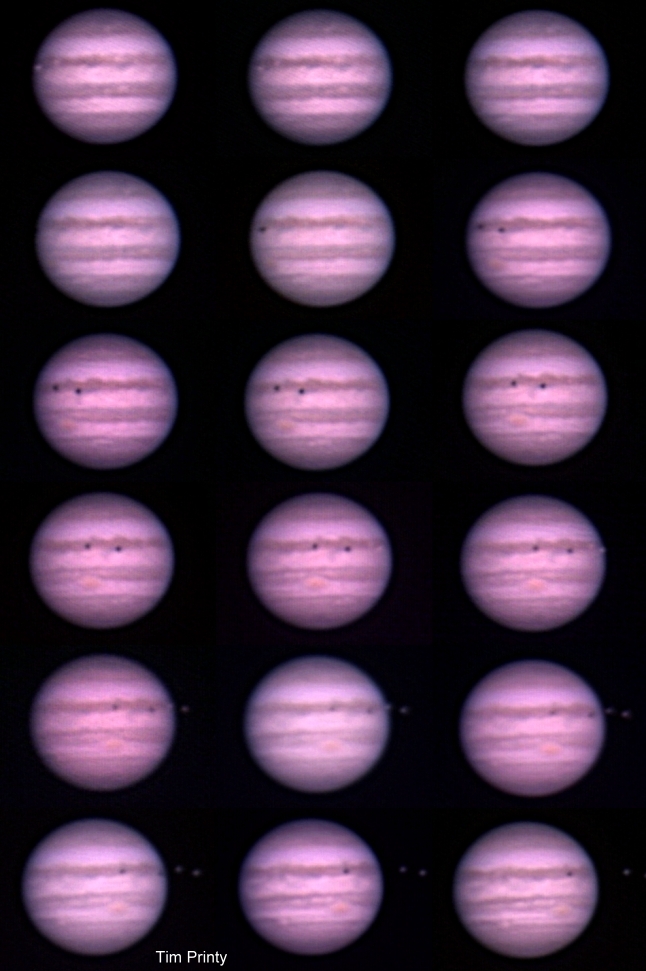
Jupiter double moon transit
Jupiter is one of the most interesting of the planets to watch over an evening. Because of the planets rapid rotation and cloud belts, the features on the disc that are visible can change within a few minutes. Additionally, the moons of Jupiter pass in front of and behind the planet. The moons and their shadows cross the planet regularly and seeing two shadows cross at the same time is a real treat. I decided to record such an event on the evening of March 29th, 2004. Starting around 9PM, I recorded the event using a webcam with a 2X barlow and my Meade 10" SCT. This gave an effective focal length of 5000mm (F20). The video clips were stacked using REGISTAX and then processed using Adobe Photoshop. I then created a mosaic of these images using Ulead's Photo Impact.
The sequence starts in the upper left and shows the moons Io and Europa beginning their transits. Europa is found in front of the north equatorial belt, while Io has just begun its transit to the lower left. The moons gradually blend into the pattern of jupiter's belts by the fourth image. However, at the lower left one can see the great red spot beginning to rotate into view. By the fifth image, one can see the shadow of Io being projected onto the planet. Why this is not Europa has to do with the position of the satellites in relation to Jupiter. Io is much closer to the planet and revolves around the planet at a faster rate. As a result we see Io's shadow before Europa's. By the sixth image, Europa's shadow appears. On the 11th frame, one can see both moons visible near the right side of the north equatorial belt region. Io is just below and to the right of Europa. Io exist first in the next frame. Again, this is due to the smaller orbit of this moon around the planet. By frame 14 both moons have completed their transit and their shadows are rapidly following. One can also see how Jupiter's red spot has rotated around the planet's face, demonstrating the rapid rotational speed of the planet. The entire sequence shown here lasted about three hours.
